Cosmic Curiosities
“The Harvest Moon glows round and bold, in pumpkin shades outlined in gold.”
~ Richelle Goodrich, American Author
Harvest Moon Effect
Imagine there was a full moon every night. A starry night sky would not be as spectacular, unfortunately, but there would be less need for streetlights. We’d probably have more songs and poems about the moon.
We come close to this full-moon-forever scenario near the fall equinox every year. For about five nights in a row, there seems to be a full moon. (Okay, they are not all officially full moons. There is only one—this year, the Harvest Moon is on October 5.) What seems like five successive full moons is something we call the “Harvest Moon Effect”!
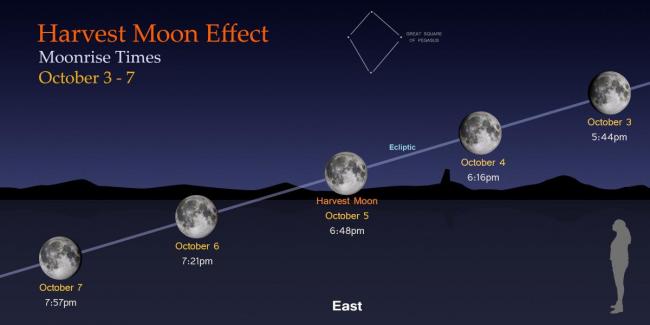
There are two reasons for a Harvest Moon Effect. First, the two nights before and after the full moon look like a full moon at first glance. However, if you look carefully, you can see the moon’s disc is missing a little of the sun’s light. Second, around the time of sunset, the moon rises near the same time for about five nights in a row. The true time is around 30 minutes later each night. But again, at first blush, the moonrise time seems similar. The end effect of all these full moons is extra light for farmers to bring in the harvest.
On average, the moon rises about 50 minutes later each night due to its west-to-east orbit motion along the ecliptic. However, at the start of fall, the ecliptic makes a shallow angle to the eastern horizon. As the Earth spins, the moon rises only 30 minutes later each night. In spring, the effect is just the opposite, with about 70 minutes between moonrises on consecutive nights.
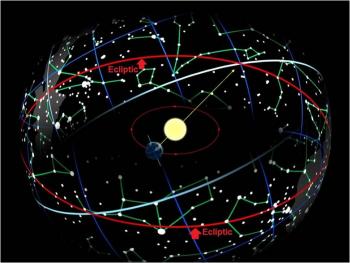 What is the ecliptic? It is celestial path for the sun, moon, and planets in our skies. The background stars along this circle are the zodiac constellations. The ecliptic path is fairly narrow because our Solar System is relatively flat, like a Frisbee or a CD. The angle between ecliptic and our viewing horizon changes all the time because planet Earth is tipped by 23.5 degrees as it orbits the sun.
What is the ecliptic? It is celestial path for the sun, moon, and planets in our skies. The background stars along this circle are the zodiac constellations. The ecliptic path is fairly narrow because our Solar System is relatively flat, like a Frisbee or a CD. The angle between ecliptic and our viewing horizon changes all the time because planet Earth is tipped by 23.5 degrees as it orbits the sun.
Today, farmers have big spotlights on their machinery and the Harvest Moon Effect is not needed. But that extra glow from the moon sure helped many a farmer over the years. Regardless, it’s a great time to step outside and enjoy some extra moonlight. Shine on, Harvest Moon Effect!
Rainbow Sun
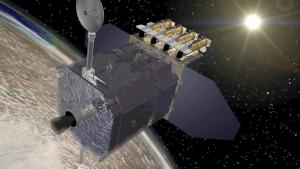 Telescopes seem like magic. They make the invisible visible. Their big mirrors collect far-flung photons, reminding us there’s this incredible universe beyond what our little eyes can see. This distant data reveals exquisite detail, discoveries that have never been seen.
Telescopes seem like magic. They make the invisible visible. Their big mirrors collect far-flung photons, reminding us there’s this incredible universe beyond what our little eyes can see. This distant data reveals exquisite detail, discoveries that have never been seen.
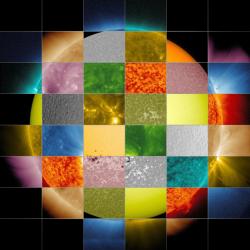 Big sophisticated scopes, like NASA’s Solar Dynamics Observatory, or SDO, not only gives scientists crisp images, it also collects light that our eyes can’t detect—all the energy along the electromagnetic spectrum.
Big sophisticated scopes, like NASA’s Solar Dynamics Observatory, or SDO, not only gives scientists crisp images, it also collects light that our eyes can’t detect—all the energy along the electromagnetic spectrum.
The rainbow sun image was put together to showcase the dynamic range of energy from the solar surface. SDO converts all these wavelengths into a picture humans can see and study. Below is a small sampling of the sun’s “new colors.”
Exploring our star at different energy levels allows astronomers to discover how, on a much deeper level, the sun works. They can better track how the charged particles move through the various solar layers and atmosphere. One day, perhaps, scientists may be able to predict a huge solar storm -- these corona mass ejections can happen any time, and can cause nationwide blackouts and satellite failures.
Think of it this way: when we paint a more complete and colorful picture of our star, it may help us keep the lights on and talking to each other.
Red Planet Report
Mars is back in the morning sky, but some people never take their eye off the red planet.
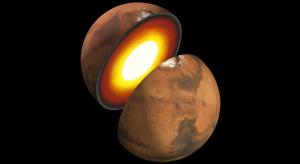 Never at loss for a clever acronym, NASA’s next trip to Mars is called “InSight” (Interior Exploration using Seismic Investigations, Geodesy, and Heat Transport). This spacecraft is a stay-put lander. It will look “in” toward the deep interior of Mars.
Never at loss for a clever acronym, NASA’s next trip to Mars is called “InSight” (Interior Exploration using Seismic Investigations, Geodesy, and Heat Transport). This spacecraft is a stay-put lander. It will look “in” toward the deep interior of Mars.
InSight’s goal is to help us better understand planet formation in our solar system about 4.5 billion years ago. Long ago, Mars was a "Goldilocks" planet. In its early, warm days, there was enough mass to cause internal heating and geological movement and layering. This activity helped the red planet build an atmosphere thick enough to trap the sun’s heat. However, Mars wasn’t large enough to keep planet’s geology substantially active. Its small size means less gravity and most of its atmosphere slowly escaped into space.
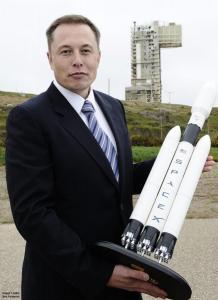 NASA is finalizing the design for the MARS 2020 rover. It will arrive at the red planet in February 2021. This next generation rover will investigate a region of Mars where the ancient environment may have been favorable for microbial life.
NASA is finalizing the design for the MARS 2020 rover. It will arrive at the red planet in February 2021. This next generation rover will investigate a region of Mars where the ancient environment may have been favorable for microbial life.
Elon Musk, founder and CEO of Space X (and PayPal and Tesla Motors), recently unveiled new plans for their space explorations to Mars. His ambitious goal is to land two advanced cargo ships that will supply support and power for eventual human crews by 2024. Musk’s ultimate goal is to start a colony on Mars with possibly 100 people. The goals are bold. Of course, no one knows if this will happen; financing is always the biggest concern and funds still need to be raised.
Sky Sights
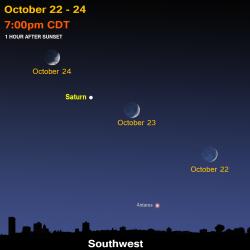
Saturn sets about three hours after the Sun in October. Look low in the southwest. Our Moon glides by from October 22-24. This is the last good month to see it through a telescope. Plan a night to join your local astronomy club and see Saturn’s rings with your own eyes!
Jupiter is out of sight all month. The mighty planet hides behind the Sun (conjunction) on October 26. Look for the second brightest planet to shine in the morning sky in mid-November.
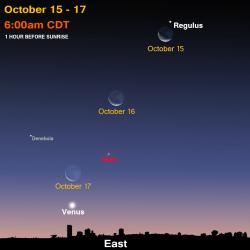
Venus and Mars put on a great morning show this month, but Venus will dominate. Why? Venus is bigger, closer, and its clouds are much more reflective than Mars. Our two neighbor planets will be very close on the morning of October 5, but Venus will be over 100 times brighter than the red planet. Our nearest space neighbor, the Moon, joins the planets from October 15-17.
Mercury is not visible this October.
Star Map
 Download the October Star Map.
Download the October Star Map.
Sign Up
See the Universe through a telescope! Join one of the Milwaukee-area astronomy clubs and spot craters on the Moon, the rings of Saturn, the moons of Jupiter, and much more.
Send an e-mail to Planetarium Director Bob Bonadurer at bonadurer@mpm.edu and place 'subscribe' in the subject line to receive the Starry Messenger and monthly star map.
![]() Follow Bob on Twitter @MPMPlanetarium.
Follow Bob on Twitter @MPMPlanetarium.


